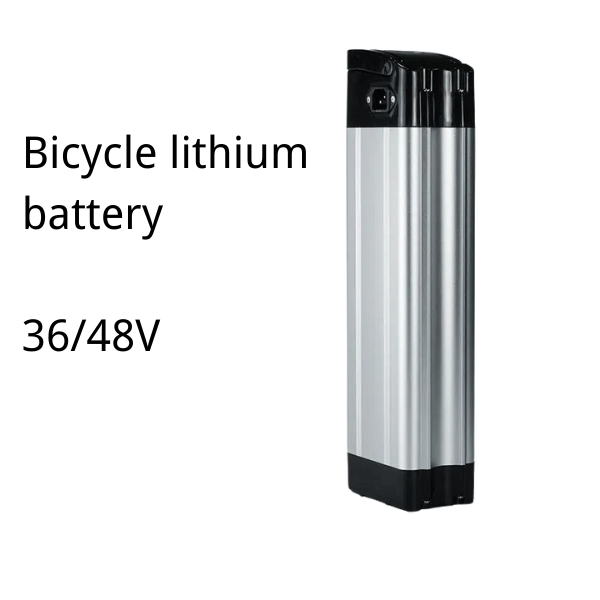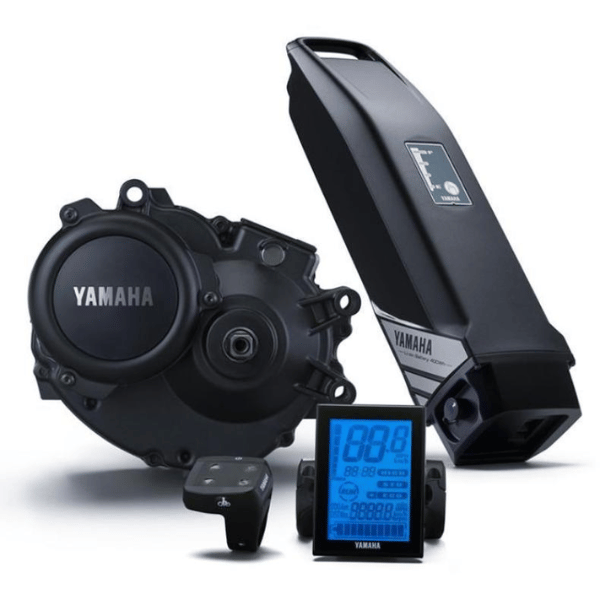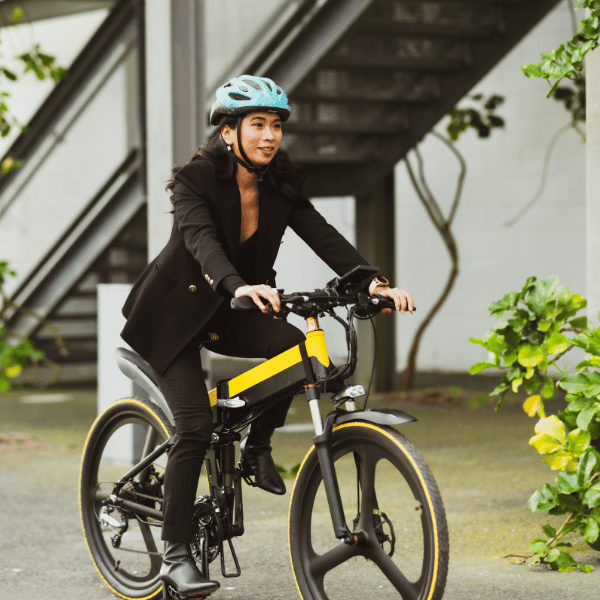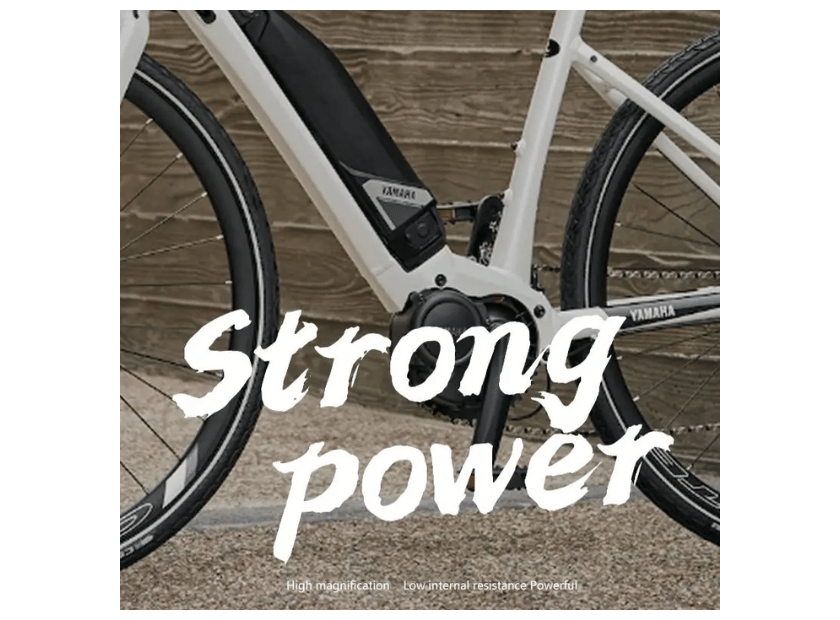Understanding Electric Bike Battery Sizes: The Comprehensive Guide to Ebike Batteries Explained
Selecting an electric bike battery size determines how well your e-bike performs and its range. Knowing the main features of these batteries is vital for enhancing your riding experience. In this extensive guide, lithium-ion, lithium polymer, nickel-metal hydride, and lead-acid batteries commonly used in e-bikes are examined in depth to reveal details of all the electric bike battery sizes. By categorizing and contrasting these battery types by their capacitance, mass, and durability, the goal of this guide is that you will leave having enough knowledge to make intelligent choices when choosing an optimal battery size for your electric bike.
What are the Main Types of Electric Bike Batteries?
Understanding the effects that different electric bike batteries can have on performance and range is crucial. We’re going to look at four most common types: lithium-ion (Li-Ion), Lithium Polymer (LiPo), Nickel-Metal Hydride (NiMH), and Lead-Acid, each with distinctive advantages for e-bike purposes.

Lithium-Ion (Li-Ion)
Lithium-ion batteries are the most popular type found in modern-day ebikes because they have a high energy density and long life cycles. Normally, they provide about 500-1000 charge cycles, maintaining constant voltage output during use. They are light in weight and small, hence best suited to e-bikes since they balance performance and portability.
Lithium Polymer (LiPo)
Lithium Polymer batteries share many similar attributes with Li-Ion counterparts but stand out due to their flexibility in shape and slightly higher energy densities. This kind of technology is preferred because it has strength and safety measures, including a gel-based electrolyte that minimizes leakage risks. Due to this advanced technology, their price is slightly more expensive compared to other types.
Nickel-Metal Hydride (NiMH)
Nickel-metal hydride batteries are famous for their excellent performance in cold climates and lower environmental impact compared to lead-acid batteries. However, they are heavy and less energy-dense than Lithium-based batteries. If you desire a reliable, eco-friendly alternative to riding on, then NiMH is the best battery pack.
Lead-Acid
Lead-acid batteries are the oldest rechargeable type and have the cheapest initial cost, but they have significant disadvantages of heaviness, size, and lifespan. They require frequent replacement and are not efficient, so lithium-based ones are becoming preferable for e-bikes.
Industry Standard
The industry standard for electric bike batteries has consistently favored Lithium-Ion because it offers better performance, lasts longer, and weighs less. These batteries outperform others when it comes to range, efficiency, and cost, therefore making them suitable for most e-bike manufacturers and hobbyists alike.
How to Choose the Appropriate Battery Size for Your Electric Bike?
Choosing the correct size of battery for an electric bike is very important for enhancing its performance and range. This guide will help you understand the main parameters to take into account.

Battery Capacity
The battery’s capacity, which is measured in Amp Hours (Ah), determines how much charge it can hold and consequently affects the distance one can travel on a single charge. To determine what capacity you need, take into account your daily commuting distance, how much power the bicycle consumes, and whether there are any other uses for this type of technology. In general, if we keep voltage constant, a higher Ah value means a longer range.
Amp Hour
Amp Hour (Ah) measures how long batteries last when delivering one ampere of current over one hour. The appropriate Ah for your e-bike depends on how intensively you use it and the motor’s power specifications. For instance, a 10Ah battery would deliver 10 amps for one hour or 5 amps for two hours. Having an adequate Ah rating ensures that your e-bike can meet your daily travel requirements without running out of charge too soon.
Watt-hour Measurement
Watt-hours (Wh) is a measure of how many watts a battery can deliver within an hour. This value plays a critical role because it gives us an overview of both voltage and capacity combined to better understand the device’s behavior over time. Wh = V x Ah where V is volts and A stands for amperes multiplied by time [e.g., hours]. Higher Wh ratings mean that long distances are maintained while supporting more powerful bikes; hence making them highly essential during battery procurement.
Factors to consider when selecting the battery size for your e-bike
It is important to choose the right battery size for your e-bike to optimize its performance and range. This section highlights key factors, such as voltage, charger compatibility, and battery pack.

Battery Pack
The battery pack is referred to as the heart of an ebike power system. To get a perfect battery pack, you need to look into series/parallel configuration, Li-ion/NiMH/Pb, and tradeoffs between weight and capacity. More parallel cells increase capacity (Ah), thus increasing range, while series connections increase voltage to support motor power. The idea here is to strike a good balance that meets your range requirements without adding unduly to the bike's weight.
Voltage
This factor greatly influences how well an electric bicycle will perform and whether it is compatible with a given motor or not. Higher voltage setups deliver greater amounts of power in terms of both energy intensity and efficiency making it easier for them to accelerate faster and climb steeper slopes. But ensure that the e-bike motor has been rated according to the battery’s voltage in order not damage it. Generally, e-bikes systems run at either 36V or 48V. Voltage selection is vital in striking an appropriate tradeoff between performance vs battery life.
Charger Compatibility
While choosing an e-bike battery, one should not forget about charger compatibility. Both voltage and amperage must be matched with those specified by the manufacturer so as to have a safe charging mode at all times. Also, take note of how long it takes to charge—higher amperage chargers can reduce charging time but may require monitoring to prevent overheating.
Always use chargers provided by the manufacturers of these batteries or those recommended since there might be some other complications if not used specifically for their batteries alone
Performance And Range Of An E-Bike About Battery Capacity
At the heart of an e-bike’s range and performance is the battery capacity that determines how far you can go and how well it handles different situations.

Battery with Amp Hour (Ah) as a Measure
The energy storage capacity of a battery is measured in Ampere hours (Ah), which directly affects your e-bike’s range. A higher Ah value means that you can potentially travel a longer distance per charge. The physical size, chemistry (Li-ion, NiMH, Lead-Acid), and series or parallel configuration are some of the parameters that affect Ah. For example, a 10Ah battery should be able to provide 10 amps for one hour or 5 amps for two hours under perfect conditions.
Charging Time
The charging time is influenced by the charger output specified in amperes (A) and battery capacity given in ampere-hours(Ah). A simple formula used to approximate charging time is: Charging Time (hours) = Battery Capacity (Ah)/Charger Current (A). However, this does not include the last stage of charging which can slow to balance cells slightly prolonging overall time. Thus, for instance, a 10Ah battery with a 2A charger would normally take about five hours to charge from empty to full.
How It Affects Motor Performance
Longer run times with optimal power output on motors without sagging their voltage are determined by battery capacity. Batteries with higher Ah ratings tend to supply stable power for longer periods. This leads to quicker acceleration on flat roads, better uphill climbing abilities and generally more active motor performances during various riding circumstances.Conversely, insufficiently capacitated batteries may lead to reduced power output and speed, especially when cycling under hard conditions.
Benefits of Going for Larger Batteries in Your E-Bike
Greater e-bike batteries lead to increased reach, resilience, and power that will upgrade your ride on different terrains without frequent stops to recharge.

Increased Commute Range
Choosing a bigger battery will greatly increase the range of your e-bike. The main factor is the higher ampere-hour (Ah) rating, which implies how much energy is stored and, therefore, how far you can go with one charge. For example, under similar conditions, a battery with a 20Ah capacity would allow you to travel longer distances than a 10Ah battery, meaning that it doubles your potential range.
Long Lasting and Durable
The benefits of larger batteries include an extended range and improved longevity and durability. Due to their greater storage capacities, such batteries undergo fewer charge cycles per unit distance, thus lowering wear and tear. Therefore, they tend to last longer before replacement compared with smaller batteries, making them cost-effective and more reliable in the long run.
Getting the Most Power for Climbing Uphill
Hence, a bigger battery helps deliver optimum power more consistently during uphill riding. During intense climbs, there is a need for maximum performance without voltage sag, so this extra power availability becomes important. A more powerful climber requires a constant flow of energy into its motor, thus sustaining acceleration when needed most.
What Impact Does the Size of a Battery Have on Ebike Functioning?
Battery size, which determines how far an e-bike can go and at what speed on one charge, influences its range, durability, and power.

36V vs. 48V Batteries Compared
A 36V battery is usually lighter and cheaper for lighter e-bikes and milder terrains. On the other hand, a 48V battery offers more power, thus enhancing the e-bike's acceleration and climbing ability, making it suitable for those who like to take challenging rides. The choice between 36V and 48V will depend on how you intend to use your bike, what kind of terrain you will be cycling through, and personal preference, considering whether you want speed versus portability.
Efficiency of Different Battery Sizes
Battery voltage and capacity (Ah) are directly responsible for energy efficiency; hence, a higher-voltage battery, such as 48V, provides better power transfer to the motor, minimizing energy dissipation and increasing the bike’s efficiency. So, a 48V battery might provide much longer range or use power more efficiently than a 36 V system with the same Ah rating.
Mileage Per Full Charge
The distance an ebike can cover when fully charged depends on both the battery's voltage (v) and capacity (ah). A powerful battery with a high Ah rating of 48 V will give higher mileage per full charge than its equals with similar capacity but with voltage set at that level due to its efficiency in delivering power even under load or in difficult terrain.
Maintaining and Extending the Life of Your Ebike Battery by Following Best Practices
Specific maintenance practices should be followed to maintain a good life span for your e-bike battery. The following guide gives you an overview of how to save your battery health.
Charging Cycles
For maximum battery life do not let it completely discharge before recharging. Instead, reducing the range between 20-80% significantly increases its lifespan. For instance, avoid using different chargers with your electric bicycle, such as those from laptops, since they might lead to overcharging and undercharging problems. Partially charging the battery regularly is preferable to charging it fully after each use.
Temperature Control
Temperatures greatly affect batteries. Thus, operating or charging your e-bike in low or high temperatures will reduce its efficiency and durability. Try charging your battery at 68ºF (20ºC)—77ºF (25ºC) while riding at that temperature as far as possible. When the weather is cold, store the battery inside to keep it at room temperature while not using it.
Optimal Storage Conditions
If you will not use your bike for a long time, leave the battery with a 40%-60% charge level stored in a cool, dry place. Store between 50 F (10°C) and 68 F (20°C). Check out the charge every two months; if necessary, top up so that it falls within recommended limits, thus preventing deep discharge of the accumulator set.
FAQ
Q: What is the e-bike battery size, and why is it important?
A: E-bike battery size refers to the battery's capacity, usually measured in watt-hours (Wh). It is important because it determines how much power the battery can store and, therefore, how far you can go on a single charge.
Q: How does the battery's size affect an e-bike's range?
A: The bigger the battery size, the higher the capacity, which means you can travel longer distances on a single charge. A smaller battery will have less capacity and a shorter range.
Q: What should I consider when choosing the size of an e-bike battery?
A: When choosing an e-bike battery size, consider your riding habits, the terrain you'll be riding on, and how far you typically travel in a single trip. A higher voltage battery can also provide more power.
Q: How is e-bike battery capacity measured?
A: E-bike battery capacity is measured in amp-hours (Ah) or watt-hours (Wh). Amp-hours indicate how much current the battery can supply over time, while watt-hours measure the total energy capacity.
Q: Can I buy a bigger battery for my e-bike?
A: You can usually upgrade to a bigger battery if your e-bike allows it. However, check with the manufacturer to ensure compatibility with your e-bike's motor and battery system.
Q: How should I care for my e-bike battery to maximize its lifespan?
A: To care for your e-bike battery, avoid fully draining it, charge it after each use, store it in a cool, dry place, and follow any specific guidelines the manufacturer provides. Regular maintenance can help extend the battery's lifespan.
Q: What are the common types of e-bike batteries used in the industry?
A: The most common types of e-bike batteries used in the industry are lithium-ion batteries. These batteries are known for their high energy density, lightweight construction, and long cycle life.


